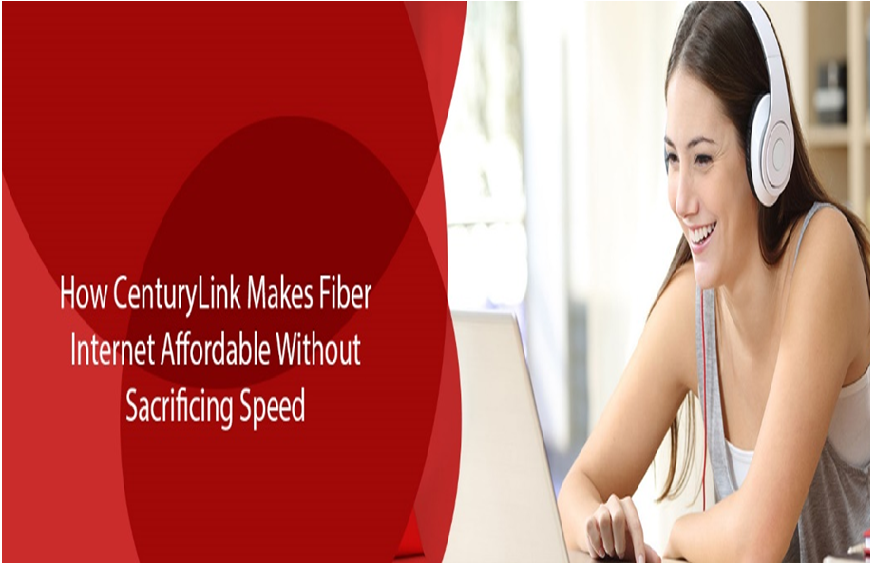How CenturyLink Makes Fiber Internet Affordable Without Sacrificing Speed

Fiber is the future of the internet. Fiber-optic cables have unlimited bandwidth and a much lower signal loss than coaxial cables, making them ideal for worldwide connectivity. Fiber internet allows internet speeds of up to 1 Gbps with a median latency lower than 20 ms. As video quality and file sizes in general continue to increase, fiber is becoming necessary in modern homes.
However, fiber connections are expensive. The installation process alone can cost a lot. CenturyLink is offering fiber connections with all the features of fiber internet at rates lower than even some cable connections.
But to understand how CenturyLink is able to make fiber internet affordable, we need to look at how fiber intent works.
How Fiber Internet Works
Fiber-optic cables are made of glass or polymer. They use light to transmit data instead of electricity. Light only travels in straight lines, but internet cables have to twist and bend to transmit data everywhere in the world. Fiber-optic cables keep the light inside by reflecting it as it hits the inner surface. Signals travel zig-zagging across the cable till they reach the other end.
Fiber-optic cables don’t use mirrors, however. There’s no reflective coating on the inside. This is because mirrors are not very efficient at reflecting light. A common mirror can only reflect close to 99.9% of light while allowing the rest to pass through. If mirrors were used in fiber-opticcables, they would have a very high signal loss.
Total Internal Reflection: Where the Magic Happens
Fiber-optic cables instead use a physics phenomenon called total internal reflection. When light enters from one medium into another (such as from air to glass), some of it gets reflected. The amount of reflected light is higher if light strikes at a steeper angle. You can demonstrate this yourself by reflecting light rays off of your phone screen and tilting it. The reflection will get brighter as the screen tilts away from the light source.
In the previous example, the light was traveling in a low-density medium (air) and was reflected off of a high-density medium (glass). The story is a little bit different when it’s the other way around. If the light is traveling inside a high-density medium and hits the surface, a lot of it can get reflected. If the angle light strikes the surface is steep enough (smaller than the critical angle), 100% of it gets reflected with no loss. This is called total internal reflection.
Bend Radius: Why Fiber Internet Is Generally Expensive
Light has to always hit the inside surface of the fiber-optic cable at a low angle for it to work. The angle at which light hits the surface increases when a fiber-optic cable is bent. If this angle gets larger than the critical angle, the light will escape and the signal will be lost.
This is why fiber-optic cables can only be bent to a certain degree. All fiber-optic cables have a bend radius, which tells how much they can be bent. Networking companies using fiber-optic cables are careful of this, they make sure fiber-optic cables are bent gradually.
It’s costly to run fiber-optic cables in cities because the bend radii of fiber-optic cables are not small. Costly equipment is used to ensure the cables don’t bend too much. It’s even costlier to bring fiber-optic cables directly to homes. Installers have to drill holes to keep the cable going straight. A fiber-optic media converter also has to be installed in the home to convert light signals back into electrical signals. This brings us to how CenturyLink Internet Plans have remained so affordable.
FTTH: Why It’s Not Worth It
Fiber-to-the-Home is the name of the technology used to bring fiber directly to homes. As of now, this is very expensive and not worth it for most homes. The high bandwidth of fiber is put to good use when data from a large number of devices are going through it. Fiber can handle a lot more data without leading to network congestion. However, you don’t need a fiber-optic cable just for your home. A coaxial cable is more than enough for your data needs.
CenturyLink Fiber Internet uses fiber for most of its network. Fiber-optic cables are used to handle high amounts of data and your data packages travel through these cables for most of their journey. At the last mile near your house where high bandwidth fiber-optic cable is no longer needed, the fiber-optic signal is converted to an electronic signal and delivered to your house via twisted pairs or coaxial cables.
CenturyLink Internet offers speeds ranging from 100 to 940 Mbps, with upload speeds as high as the download speeds for fiber connections. There are no data limits, no overage fees, and no contract. Fiber is also highly reliable, allowing CenturyLink an uptime of 99.9%. Visit buytvinternetphone.com to see if CenturyLink Internet is available in your area.





